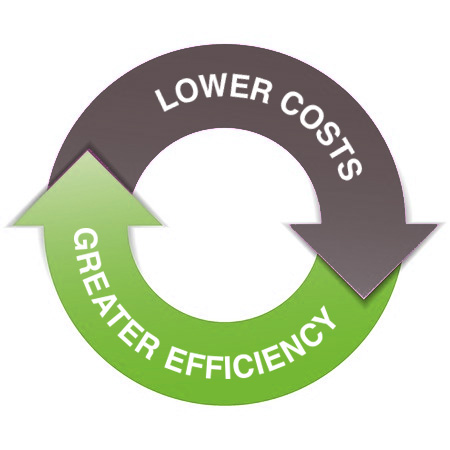In the world of digital advertising, both programmatic and display network advertising play key roles in reaching online audiences. However, they differ significantly in terms of approach, targeting capabilities, and automation.
Understanding the Basics of Display Network Advertising
Display Network Advertising has been a staple of Internet marketing since the mid-1990s. These ads come in many different-sized banners and are displayed through display ad networks. One of the largest is Google Display Network (GDN). It contains over 2 million websites, videos, and apps and can reach over 90% of internet users.
Programmatic Advertising
It’s more of an automated way to buy ad space rather than just another network. It is a process that uses algorithm-based technology, which has made ad placements fast and cost-effective by ensuring proper placements. Ad space is sold through ad exchanges, where publishers offer space, and advertisers bid in real-time, using advanced analytics to optimize placements to get the most impressions for the least cost.

Basic Difference Between Programmatic Advertising Vs Display Network Advertising
| Aspect | Programmatic Advertising | Display Network Advertising |
| Buying Process | Uses automated technology to buy ad space from a wider range of ad exchanges. | Operates within a closed ecosystem, such as Google Display Network. |
| Audience Reach | Offers greater reach across multiple platforms and exchanges. | Limited reach based on sites and apps within the network. |
| Ad Types and Integration | Native ads integrated within content with advanced targeting. | Traditional banner ads or standard formats. |
| Market Trends | Dominates digital ad spend, projected to hit $800 billion by 2028. | Still relevant in niche markets. |
Comparing Reach
One of the most significant differences between programmatic and display network advertising is reach. Display networks can only serve within a walled garden—that is, the websites that are part of their network.
Programmatic Advertising conversely, functions on multiple ad exchanges. This gives it a much larger inventory therefore, the potential reach greatly increases.

Ad Types
Display network advertising and programmatic advertising support various ad formats, including video and interactive HTML5.Yet native programmatic ads distinguish themselves in easy content integration, resolve banner blindness, and enhance user engagement. Performance marketing outcomes with programmatic native ads can go up to an entirely different level compared with traditional display ads.
Targeting Options
Although both offer high-level audience targeting—including remarketing and custom audiences—the list of targeting options is richer with programmatic advertising. This is because the analysis is given the much data generated by users, thus enabling very accurate audience segmentation and highly targeted campaigns across the various third-party networks, unlike in the display network targeting, which confines the advertiser.
Efficiency and Cost
These benefits are based on the ability to make programmatic advertisements super-fast and cost-efficient due to the fact that they are automated and happen in real time. The manual efforts in buying placements, targeting, and analysis are removed from the process. Advertisers can create, make, and track changes in their campaigns all within a single dashboard, enabling strategic changes to be made on the fly. Such a type of bidding allows ad placement in real-time and at the best possible place while trying to incur the lowest cost possible. Such technology is driven by artificial intelligence algorithms that augment reliability and performance.

Programmatic vs. Display Ads: By the Numbers
Digital advertising has achieved relentless growth, where programmatic advertising comes into play for such a cause. Currently, programmatic purchasing accounts for over 80% of all ad expenditures and transactions in digital advertising. In the year 2024, the total global spending on programmatic advertisement was almost $550 billion, but that will increase to nearly $800 billion in 2028.
The value of Programmatic Video Advertising is projected to increase from $74 billion in 2024 to nearly $96 billion by 2025. But as programmatic penetrates OOH advertising, such as billboards and kiosks, where 41% of OOH ad spend is from programmatic during the first six months of 2023, it further complements.
Despite the fact that the trend of advertising is increasingly moving toward programmatic ads, display network ads still remain relevant. This is particularly true for those industries that programmatic has not yet overtaken, such as cooking and education. Display networks continue to be a useful device for the digital marketer, more specifically for niche markets in which direct display continues to be quite present.
Best Application
The biggest challenge for the marketer is knowing how and when to use each method to ensure they get the maximum ROI and create an uplift in their online advertising results. Programmatic advertising is an excellent choice for a large campaign due to its wide reach, real-time efficiency, and advanced targeting. On the other hand, at times, networks may work better than programmatic while going in a highly targeted setup if the sites on the network are similar to the campaign requirements.
Conclusion
In dynamic digital advertising, understanding the differences between programmatic advertising and Display Network Advertising is an assignment. While reach, efficiency, and growth count for more in programmatic advertising, display networks still retain some market significance. Marketers have to weigh up the individual requirements and their audiences to use both methods strategically to optimize their ad spending and achieve the best possible results.
